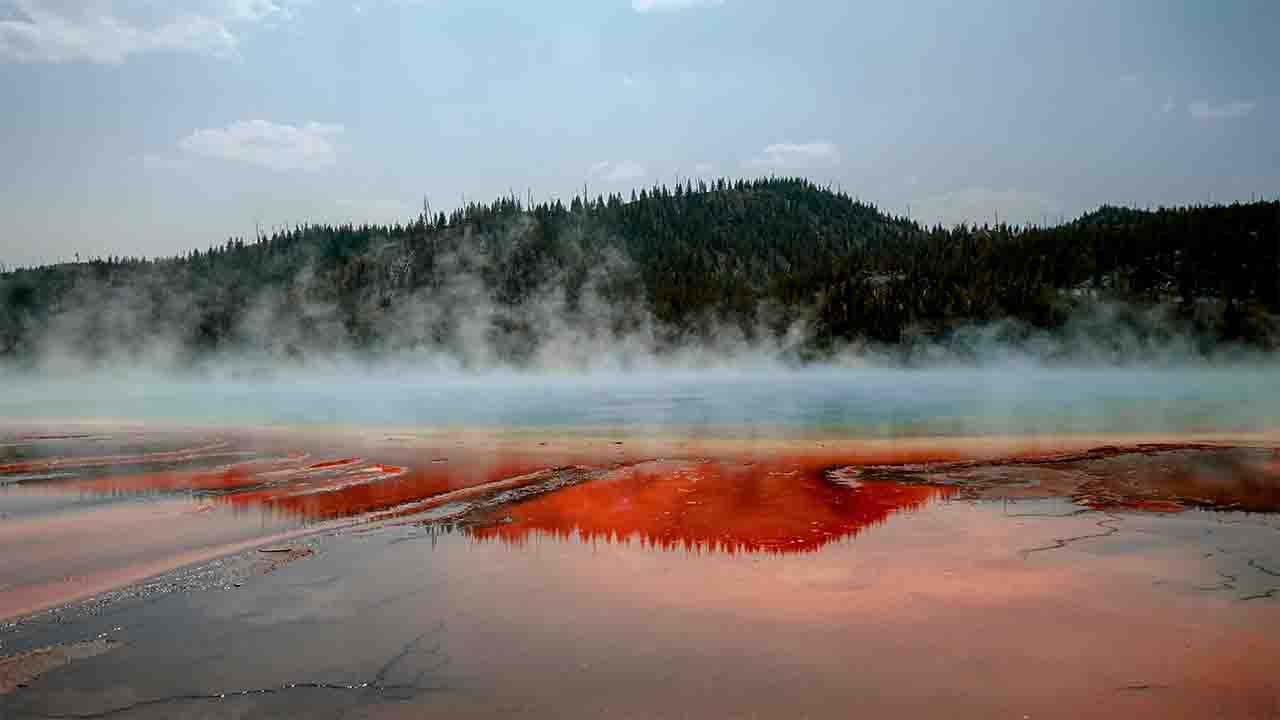Science & Technology, UK (Commonwealth Union) – Ancient hot springs hold a unique place in Earth’s history, providing a fascinating glimpse into the geological and biological processes that have shaped our planet over millions of years. These natural wonders, often tucked away in serene landscapes, serve as more than just soothing retreats; they are portals to an ancient world, offering insights into the intricate interplay between geothermal activity and the evolution of life on Earth.
Newcastle University researchers, backed by the UK’s Natural Environmental Research Council, delved into the origins of life on Earth by examining ancient hot springs. Over 3.5 billion years ago, the team explored the transition from inert geological materials to the first living systems. Through experiments replicating mild hydrothermal vent conditions, scientists at Newcastle University discovered that a combination of hydrogen, bicarbonate, and iron-rich magnetite produced a range of organic molecules, notably fatty acids with up to 18 carbon atoms.
Published in the journal Nature Communications Earth & Environment, their study sheds light on the formation of key life-building molecules from inorganic chemicals. This insight is crucial for understanding a pivotal stage in the Earth’s early life processes. The research suggests a plausible genesis for the organic molecules constituting ancient cell membranes, potentially selected by early biochemical processes on the primordial Earth.
Fatty acids, essential components in the initial phases of life, are lengthy organic molecules with hydrophilic and hydrophobic regions, facilitating the spontaneous formation of cell-like compartments in water. These molecules are speculated to have played a crucial role in the creation of the first cell membranes. However, the origin of these fatty acids during the early stages of life remained uncertain. One hypothesis suggests their formation in hydrothermal vents, where hot water, enriched with hydrogen, mingles with CO2-containing seawater.
In their laboratory, the research team emulated key aspects of the chemical conditions present in the early Earth’s oceans, particularly focusing on the mixing of hot alkaline water around specific hydrothermal vents. Their experiments revealed that the combination of hot hydrogen-rich fluids with carbon dioxide-rich water, in the presence of iron-based minerals prevalent in the early Earth, resulted in the formation of the necessary molecules for constructing primitive cell membranes.
Dr. Graham Purvis, the lead author of the study conducted at Newcastle University, currently serves as a Postdoctoral Research Associate at Durham University.
Dr. Purvis says “Central to life’s inception are cellular compartments, crucial for isolating internal chemistry from the external environment. These compartments were instrumental in fostering life-sustaining reactions by concentrating chemicals and facilitating energy production, potentially serving as the cornerstone of life’s earliest moments.
The results suggest that the convergence of hydrogen-rich fluids from alkaline hydrothermal vents with bicarbonate-rich waters on iron-based minerals could have precipitated the rudimentary membranes of early cells at the very beginning of life. This process might have engendered a diversity of membrane types, some potentially serving as life’s cradle when life first started. Moreover, this transformative process might have contributed to the genesis of specific acids found in the elemental composition of meteorites.”
Dr. Jon Telling, Principal Investigator and Reader in Biogeochemistry at the School of Natural Environmental Sciences, indicated that their research may mark the initial stride in understanding the origins of life on Earth. Ongoing work in our laboratory now focuses on unraveling the subsequent crucial stage: the process by which organic molecules, initially adhered to mineral surfaces, can detach and assemble into spherical membrane-bounded structures resembling primitive cells. These early ‘protocells’ are believed to have paved the way for the emergence of the first cellular life forms.”
Interestingly, the researchers also propose that analogous membrane-forming reactions might still be occurring beneath the icy surfaces of moons within our solar system’s oceans. This suggestion raises the intriguing possibility of alternative origins of life in these distant celestial bodies.








